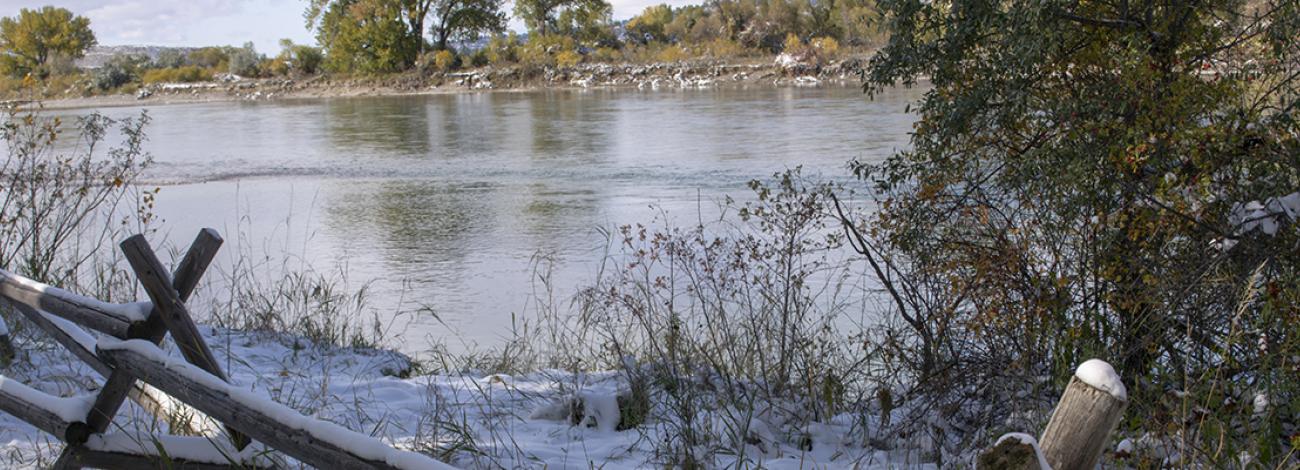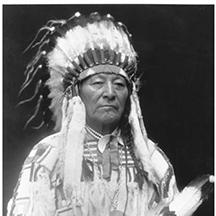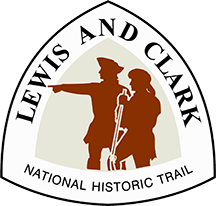
History and Nature Overview
Learn about the cultural, natural, and political history of Pompeys Pillar.
Cultural History of Pompeys Pillar
- American Indian Territory
-
Pompeys Pillar is within the homeland of the Apsaalooke, or Crow people. One Crow name for the Pillar is, Iishbiiammaache, or “The Mountain Lion’s Lodge.” Ethnographic and archaeological evidence indicates that the Pillar was also a place of ritual and religious activity for several American Indian tribes for over 11,000 years. Hundreds of pictographs and petroglyphs on the face of the rock reflect the importance of the Monument to early peoples. Read more about the Native Americans who have long inhabited lands near Pompeys Pillar.
- Lewis and Clark National Historic Trail
-
Captain William Clark, Sacagawea, her 18-month-old son, Jean Baptiste Charbonneau (nicknamed "Pompey"), and a crew of 11 men stopped near the rock outcropping on their return trip from the Pacific Coast. On July 25, 1806, Clark carved his signature and the date into the rock. The historic inscription is one of the few remaining pieces of physical evidence still visible on the Lewis and Clark National Historic Trail. Read more about the Lewis and Clark National Historic Trail.
- Traders, Travelers, and Settlers
-
Pompeys Pillar also includes the markings and signature of a host of characters from the pioneer past, including European fur trappers, Yellowstone River steamboat men, frontier army troops, railroad workers, missionaries, and early settlers. In a very real sense, Pompeys Pillar’s sandstone facets hold a vivid history of the unfolding West. Read more about the traders, travelers, and settlers of Pompeys Pillar.
- Overview
Pompeys Pillar is a National Conservation Lands site. The area supports a variety of wildlife including deer, fox, coyotes, raccoons and numerous small mammals, amphibians and reptiles. Much of the wildlife population is a result of the site’s thriving riparian zone, a healthy plant community of grasses, willows and cottonwood trees. The river supports many neo-tropical migratory bird species, and the riparian corridor allows for nesting and safe resting cover during migration.
- Geography
Pompeys Pillar encompasses 51 acres on the southern bank of the Yellowstone River. The Pillar is a sandstone geologic remnant covering about two acres at its base and stands about 120 feet high. Because it is the only sandstone outcrop on the south side of the Yellowstone River for several miles in either direction, it has been a landmark for centuries.
Pompeys Pillar is at a natural ford in the Yellowstone River. In addition, the mouth of Pompeys Pillar Creek on the north side of Yellowstone and the mouth of Fly Creek on the south form natural passageways leading to the river ford at Pompeys Pillar. As a result, the area has been a crossroads throughout history for hunters and their prey such as once-prominent herds of buffalo. In addition to Clark’s signature, the sandstone is marked with literally hundreds of other etchings and drawings.
- Geology
The Pillar and the cliffs across the river are composed of sandstones and shales of the Upper Cretaceous Lance (Creek) Formation. The Lance formation is composed of alternating beds of light-yellow to grayish sandstones, bluish to grayish sandy shale, drab yellow and gray clays, and clay shale. Elevations on the base of the Lance Formation show that the formation is inclined downward toward the east at a rather uniform rate of about 12ft to the mile. The formation thickens from north to south and there is little thickness change from east to west. Thirty percent of the Lance formation is made up of channel sandstones 20ft or thicker, while 70% of the Lance is thinner sandstone and finer grained interfluve sedimentary rocks.
Geologists consider the Lance Formation to be equivalent to the Hell Creek Formation. The Hell Creek Formation has been found to contain the fossilized remains of dinosaurs and primitive mammals. Although no animal or plant fossils have been documented at Pompeys Pillar, significant fossils have been found in similar sandstone beds nearby.
William Clark may have been the first to record a paleontological find in the area immediately downstream from Pompeys Pillar. “I employed my Self in getting pieces of the rib of a fish which was Semented within the face of the rock. ...it is 3 feet in length though a part of the end appears to have been broken off.” It is thought that this reference is to the discovery of a fossilized rib in the uppermost Hell Creek Formation. The rib probably came from a terrestrial dinosaur. The most common terrestrial dinosaurs of that period in this area were the hadrosaurus, triceratops, albertosaurus and tyrannosaurus.
- Ecology
Pompeys Pillar is a National Conservation Lands site. The area contains three distinct ecosystems: the mixed grass prairie, the river/riparian area, and the sandstone cliffs of the Pillar.
The Yellowstone can be characterized as a meandering braided prairie river. The Yellowstone is the longest free-flowing river in the lower 48 states and provides rich, fertile farmland and habitat for many wildlife and bird species. The riparian areas along the river contain several cottonwood community types. Many standing cottonwood trees within the flood plain are estimated to be more than 100 years old.
- Wildlife
Pompeys Pillar is a home to many wildlife species and is designated a Watchable Wildlife Viewing Area. The more common species include mule and whitetail deer, fox, coyotes, raccoons and numerous small mammals, amphibians and reptiles. Marmots are a very common site, daily, at the Monument. While not very common, there have been a few mountain lion and black bear sightings. Much of the wildlife population is a result of the site’s thriving riparian zone, a healthy plant community of grasses, willows and cottonwood trees that stabilize the riverbank and provide important habitat. At the time William Clark traveled through the area, he made note of seeing hundreds of buffalo, elk, wolves, and deer. Today, although the area supports a variety of wildlife, it is not to the extent nor diversity that Clark noted. Please note, there are usually quite a few mosquitos, ticks and other insects active at Pompeys Pillar during summer months (please plan accordingly).
Clark noted seeing wildlife in abundance here and elsewhere along the Yellowstone, “for me to mention or give an estimate of the different Species of wild animals on this river particularly Buffalow, Elk Antelopes & Wolves would be increditable. I shall therefore be silent on the subject further.”
Birds
The Yellowstone River supports a remarkable diversity of bird species. Many neo-tropical migratory bird species use the riparian corridor at Pompeys Pillar for nesting and/or as safe resting cover during migration. More than 160 bird species have been observed on or near Pompeys Pillar, including numerous waterfowl, songbirds, shorebirds, woodpeckers, raptors, swallows, and game birds. Some birds observed in the area are on the BLM’s sensitive species list: the ferruginous hawk, gyrfalcon, the loggerhead shrike, Franklin’s gull, Forster’s tern, the northern goshawk, the sage grouse, the peregrine falcon. Peregrine falcons have historically occupied rocky cliff habitat near Pompeys Pillar. Twenty-one peregrines were released east of Pompeys Pillar in 1996. Great horned owls often nest and lay eggs on the south and west sides of the Pillar’s cliff walls, as do numerous barn swallows and pigeons. Bald eagles can often be seen among the cottonwood trees and there is currently a large nest on the island on the east side of the ACEC. Ospreys are often seen along the riverbanks, and two large nests sit on the Bundy Bridge and can be seen from Pompeys Pillar.
Fish
The Yellowstone River near Pompeys Pillar is a transition zone between a cold and warm water fisheries. As such, fish species representative of both temperature zones have been recorded in this reach. Common fish species include goldeye, common carp, flathead chub, emerald shiner, western silvery/plains minnow, river carpsucker, shorthead redhorse, longnose sucker, white sucker, mountain sucker, channel catfish, stonecat, burbot, smallmouth bass and sauger. Please note that since large floods came through the area in 2021, Pompeys Pillar National Monument no longer offers direct access to the shoreline of the Yellowstone River.
Threatened and Endangered Species
Two threatened/endangered species occur in the Pompeys Pillar area or have biogeographical ranges that overlap the area. Bald eagles (threatened) have occupied nests in the vicinity of Pompeys Pillar, but no black-footed ferrets (endangered) have been found in the vicinity of the Pillar.
- Monument Establishment
The BLM purchased the land that now comprises Pompeys Pillar National Monument in 1991 for its historic significance and its interpretive and recreational potential. The BLM acquired Ralston’s works with the property. In 1992, the BLM constructed limited facilities for the protection of resources and the comfort and safety of visitors. Facilities included a small log contact station and a stairway to Clark’s signature and the top of the Pillar.
Pompeys Pillar National Monument was officially established by presidential proclamation on January 17, 2001. The 5,700-square foot Pompeys Pillar Visitor Center opened in 2006 with additional improvements completed in 2007. The facilities and improvements were funded by BLM, the Friends of Pompeys Pillar, the Department of Transportation, Yellowstone County, and the National Park Service.
The BLM documents management actions and accomplishments in an annual Monument Manager’s report. Here is a recent report from 2023.
- Official Monument Partners
The Friends of Pompeys Pillar has worked closely with BLM in the acquisition, operation and development of this site. It has also raised funds to match a congressional appropriation for the construction of the center, and alongside summer interns from the Montana Conservation Corps, has helped staff the center and bookstore/gift shop and provide interpretive tours for visitors.



